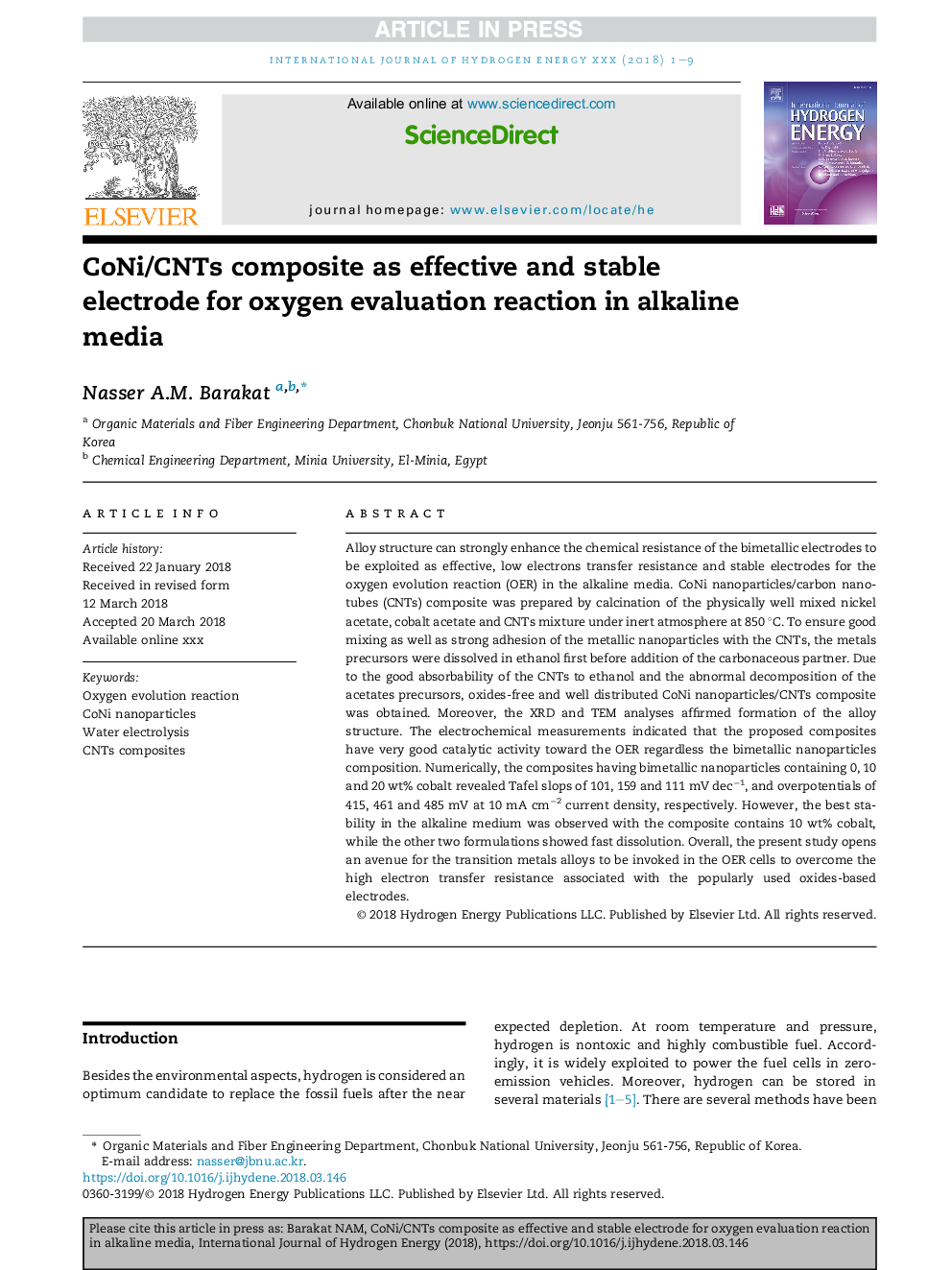| Article ID | Journal | Published Year | Pages | File Type |
|---|---|---|---|---|
| 7706169 | International Journal of Hydrogen Energy | 2018 | 9 Pages |
Abstract
Alloy structure can strongly enhance the chemical resistance of the bimetallic electrodes to be exploited as effective, low electrons transfer resistance and stable electrodes for the oxygen evolution reaction (OER) in the alkaline media. CoNi nanoparticles/carbon nanotubes (CNTs) composite was prepared by calcination of the physically well mixed nickel acetate, cobalt acetate and CNTs mixture under inert atmosphere at 850 °C. To ensure good mixing as well as strong adhesion of the metallic nanoparticles with the CNTs, the metals precursors were dissolved in ethanol first before addition of the carbonaceous partner. Due to the good absorbability of the CNTs to ethanol and the abnormal decomposition of the acetates precursors, oxides-free and well distributed CoNi nanoparticles/CNTs composite was obtained. Moreover, the XRD and TEM analyses affirmed formation of the alloy structure. The electrochemical measurements indicated that the proposed composites have very good catalytic activity toward the OER regardless the bimetallic nanoparticles composition. Numerically, the composites having bimetallic nanoparticles containing 0, 10 and 20 wt% cobalt revealed Tafel slops of 101, 159 and 111 mV decâ1, and overpotentials of 415, 461 and 485 mV at 10 mA cmâ2 current density, respectively. However, the best stability in the alkaline medium was observed with the composite contains 10 wt% cobalt, while the other two formulations showed fast dissolution. Overall, the present study opens an avenue for the transition metals alloys to be invoked in the OER cells to overcome the high electron transfer resistance associated with the popularly used oxides-based electrodes.
Related Topics
Physical Sciences and Engineering
Chemistry
Electrochemistry
Authors
Nasser A.M. Barakat,
